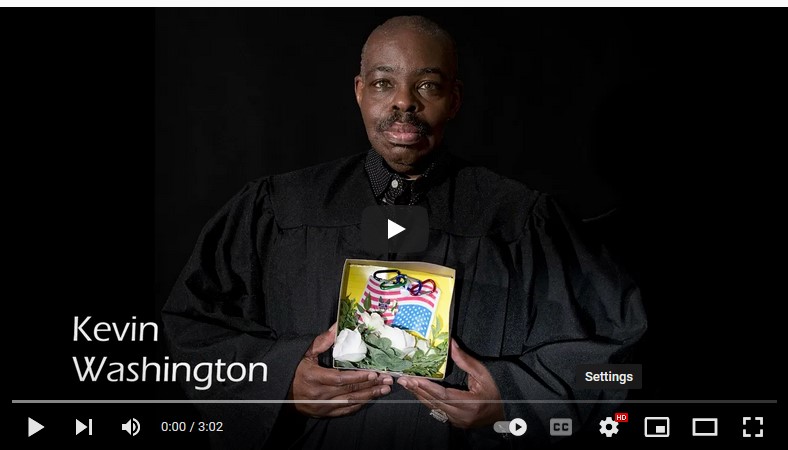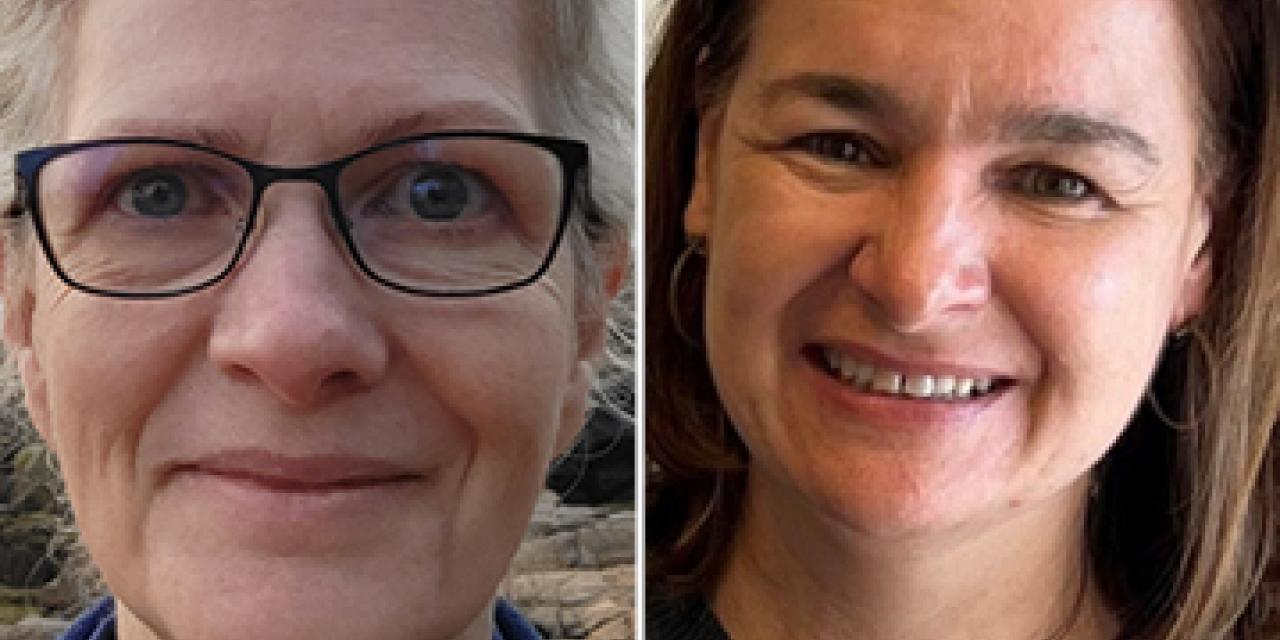Nicole S. Grant Yonkman is the first woman to be senior pastor at historic First Church (United Church of Christ) in Windsor, Connecticut. Laurel Pepin, a photographer and office manager, has been a deacon and leads the congregation's Creative Worship Team. In this edited conversation, they share learning from codirecting a Vital Worship Grant from the Calvin Institute of Christian Worship.
What was your grant purpose?
NGY: Before applying for the grant, our church had written a new mission statement: "First Church in Windsor strives to live by faith, be known by love, and be a voice of hope." Two of our new core values are transformational worship and reaching new people. Our congregation didn't reflect the diversity in our wider community, so we wanted to test whether we could reach a more diverse group of people through creative worship.
LP: Our grant purpose was to use liturgical art and creative rituals to create inclusive worship that welcomes worshipers of all ages, abilities, and cultures. We believe that liturgical art can transcend time and space to create "God moments" that build the beloved community.
What's an example of transformational worship during your grant?
LP: During Lent 2020 we built a wilderness in the worship space by using each balcony pillar as a tree. We hung actual branches and planned to gradually add tissue paper birds, butterflies, and flowers so that it would all come alive on Easter Sunday.
NGY: During the prayer time on Lenten Sundays, we invited people to write on paper leaves something they wanted to let go of. People wrote about shame over reproductive issues, family worries, health concerns, and more. We hung the leaves on the branches. Then COVID shut down everything.
How did the pandemic change how you carried out your 2020 Lenten journey and the rest of your grant project?
NGY: Since we couldn't literally experience the physicality of corporate worship in the same space, we worked on how to do that virtually. Virtual worship needs to be more imaginative in the mind and heart instead of physically interactive. Our Lent 2020 wilderness still bloomed, but, instead of having people walk inside and look up on Easter, we shared the visuals through virtual worship during the welcome to worship time. We looked for ways to lift up creative work, help people experience God as Creator, and see that when we use our abilities creatively, we are using gifts God gave us.
LP: We started making trailers for each sermon series, such as "God, the Artist." One virtual worship service focused on God as a weaver, weaving people together through covenants. I made a short weaving meditation that combined poetry, landscape imagery, background music, and footage of a local weaver who is blind. Nicole interviewed that weaver, Ana Cueva, and led a Zoom discussion about how empowering it can be to create things. That series also included a potter and a stone sculptor.
Our Creative Worship Team has found that liturgical art installations and videos enhance our worship by providing meaning, mood, and an opportunity for visual meditation. These visual aids can successfully communicate where words may sometimes fail, such as with young children, people with learning challenges, or people who learn visually.

Of your many transformational worship projects, which ones especially helped worshipers meet God in the moment?
NGY: The way that two series—"I Believe" and "Illuminated Faith"— intertwined was especially successful. Our core belief is that God, through Jesus, became light to all people, and each person carries a piece of God's light in them. We invited people to an event where we learned from a photographer who'd helped others reveal life stories from "beneath the surface" by decorating little boxes. Fifty people came to our event, and twenty-eight agreed to participate. We asked participants to reflect on the light of God and express it in two ways: writing a 500-word essay beginning with "I believe in . . ." and visually embodying their "I believe" statement by making art from a box we provided.
LP: Over several months, I met with each participant individually to photograph them with their box, while someone else recorded them reading their essays. People described why they believe in transformation, light as art, the power of a little, the sanctity of the earth, the power of the Holy Spirit, the power and glory of God, inspiration and determination, and more. It was so powerful. There were lots of tears.
How did you use this series in worship?
NGY: Thinking about what they believe and (about) why and how they'd come to believe it became a faith formation exercise. Laurel combined the photos and audio into a short video of each participant. We used those in virtual and hybrid worship. Where possible, I related videos to my sermons. One great example was Julie Fewster's "I Believe in a Singing Faith."

How did you share your grant project beyond your congregation?
LP: From Facebook analytics we learned that if we used a video not only in worship but also shared it as a separate clip after the worship service, then more people would share it with friends and family on Facebook or as a link in email. We archive many videos on our First Church in Windsor (FCW) Facebook page and FCW YouTube channel. We also hosted a community event to share "Illuminated Faith / I Believe," and we practiced in church how to invite people to the event.
NGY: For the community event, we had a photo blown up to poster size for each of the participants. Beside each photo was a QR code so you could listen to their essays by phone. Of these, we featured eleven photos in the worship space. People here sometimes worry about being "too Jesus-y," so we tried to get a diverse group of voices with diverse beliefs. Their ages ranged from pre-teen to senior citizen.
Could you tell whether "Illuminated Faith / I Believe" or your other grant installations and short videos evoked emotion?
LP: We received many emails, had one-on-one phone conversations, and hosted a feedback session about our grant. People spoke freely about how the videos were so beautiful, or brought them to tears, or touched them deeply. They said the videos were so meaningful in worship that they shared them with others. This caused us to consider a sustainable way to continue videos in worship beyond our grant year. We also got really good responses when we asked people to send in photos, which we used in meditative and engagement videos. One of our Veterans Day videos even got shared on our town's Facebook page.
NGY: Our "Illuminated Faith / I Believe" community event drew 200 people outside the church. People from online worship and in-person worship, plus viewers of our local public access channel (WIN-TV), also saw it. The project brought together visual art, hands-on art, sharing art, faith formation, and audio expression. It compelled people to share deeply about themselves in a way that was accessible to others. The series made worship more inclusive because it demonstrated the diversity of people and their beliefs. Many commented that they heard things they themselves also believe, but had never heard anyone express. It made them feel more confident in their faith.
I was especially moved by Bryan Berry's "I Believe in Mental Health Treatment." Bryan, who's been a church deacon, shared his lifelong struggle with mental illness and how faith has helped him through. He had never shared this with anyone outside his immediate family. It started a conversation at church, and many who have family with mental health issues felt seen and understood. I believe Bryan's story may have saved actual lives (by) helping them get treatment.
LEARN MORE
View worship videos on the First Church in Windsor (FCW) Facebook page and FCW YouTube channel. Learn more about their grant project through their grant poster and articles in local and denominational news. Nicole Grant Yonkman and Laurel Pepin recommend reading Think Like a Filmmaker: Sensory-Rich Worship Design for Unforgettable Messages, by Marcia McFee.

